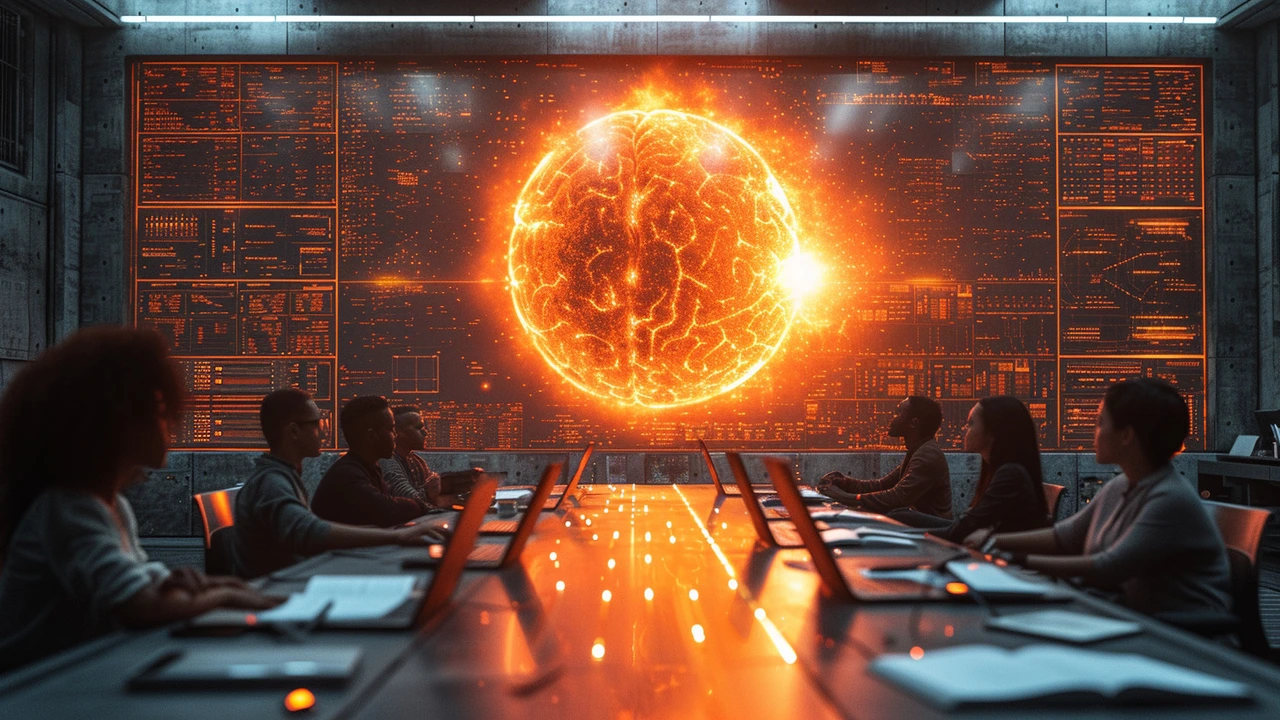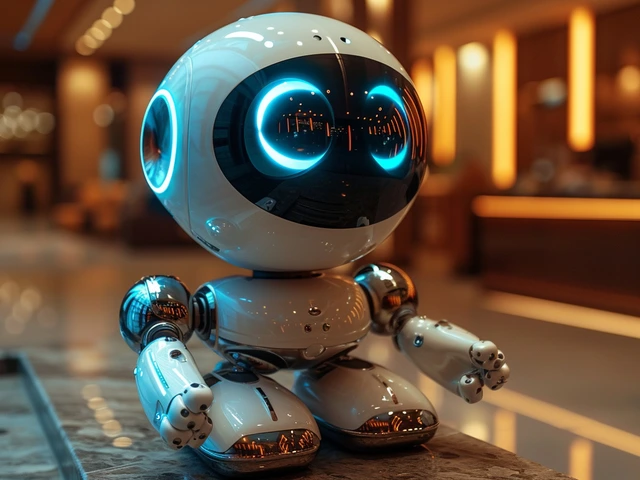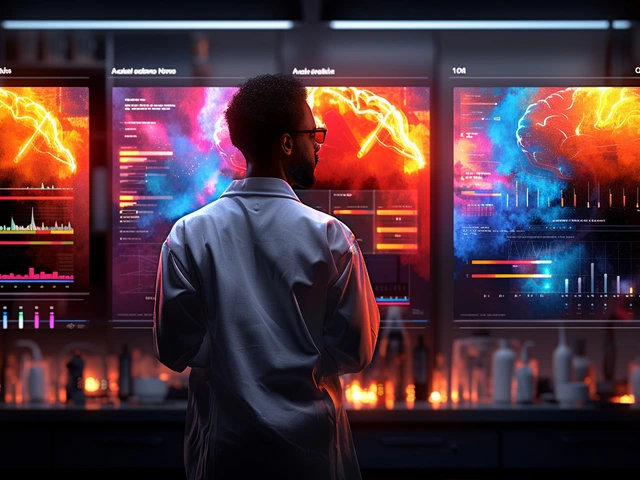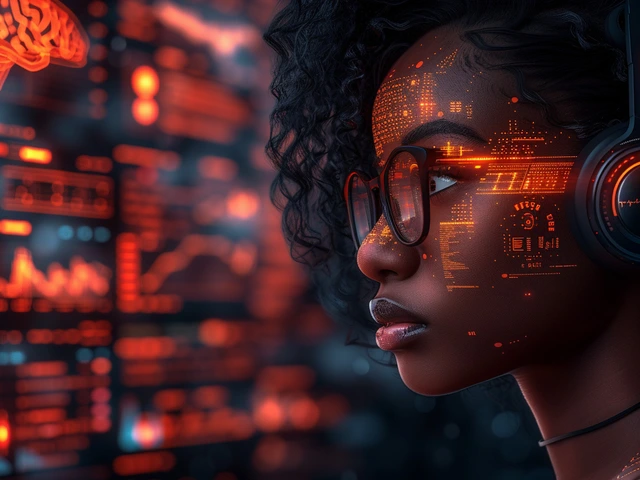Mastering Coding for AI: A Guide to the Future of Tech Innovation

Mastering Coding for AI: A Guide to the Future of Tech Innovation
Understanding the Buzz Around AI and Its Future
Let's face it, nowadays, you can't swing a USB cable around without hitting a headline screaming AI this or machine learning that. And for good reason! The advancements in this field have been growing at an exponential rate, leaving us all a tad breathless. The excitement surrounding Artificial Intelligence (AI) is not just hype; it's rooted in the very fabric of the potential it holds for transforming technology as we know it.
What really tickles my curiosity is how coding for AI has quickly become a prized skill set. It's like the digital world's equivalent of being able to create a mean, legendary souffle that rises to perfection – downright impressive and a tad magical. Traditionally, coding has been associated with developing websites, apps, and software. However, the next frontier that's truly tantalizing is coding for AI: crafting the algorithms and neural networks that enable machines to 'think' and learn.
AI is no longer nestled in the realm of sci-fi. It's here, it's real, and I'm genuinely invested in its narrative. Why? Because I've witnessed its potential to pivot careers, streamline mundane chores, and, heck, even fine-tune your morning coffee to celestial perfection. Picture this scenario: Emily, my better half, often jokes that if our home AI could detect her mood and create a playlist to match, it would be playing 'Here Comes the Sun' on loop every time I've managed to wash the dishes without a reminder. I tell ya, the possibilities are limitless.
Imagine a future not too far off, where routine coding for websites is largely automated. In its place will have risen the mighty AI developers, those who know just how to teach a machine to learn from experiences rather than from a static set of instructions. As I navigate this riveting landscape, I find myself caught up in the glorious whirlwind that is coding for AI, and I invite you on this thrilling journey to understand why it's the next big thing in tech.
Grasping the Basics: Coding Languages for AI
Now, if you're wondering what magical concoction of ones and zeroes make these AI wonders possible, the answer lies in coding languages. Not your average abracadabra, but the coding languages used for AI are often standard ones with a twist of machine learning libraries and frameworks for added zest. Python has clearly emerged as the darling of AI development, with its user-friendly syntax and a smorgasbord of libraries like TensorFlow, PyTorch and Keras.
But why Python, you might ask? Well, it's as if Python was designed with the foresight of AI's ascension. Its simplicity allows for quick experimentation and iteration, which is like gold for AI developers who are constantly tweaking their models. Besides Python, there are other characters in this plot, such as R for the statisticians, Java for its portability, and C++ for when you need that extra punch of performance. Selecting the right language is a bit like choosing your wand in the wizarding world of Harry Potter – it's got to match your style.
Learning to code in one of these languages is akin to picking up a new instrument. It can be daunting at first with all the seemingly incomprehensible notes (or code), but once you get the hang of it, it's music to the ears (or sheer poetry for the eyes, in this case). Emily often chimes in, saying that watching me code is like witnessing a pianist lost in their music—perhaps she's being kind or just loves the look of intense concentration and occasional furrowed brows.
And when you've grasped the basics and maybe even achieved a fine mastery of the tools of the trade, that's when the fun begins. You'll start with simple algorithms, graduate to machine learning models, and before you know it, you're talking deep learning, neural networks, and natural language processing. It's not just learning a language; it's about learning to create a new form of intelligence, which is pretty epic if you ask me.
The Intricate Dance of Machine Learning
Machine learning is truly an intricate dance, a sort of tango between data and algorithms. They say it's not AI if it doesn't learn, and machine learning is at the heart of that learning process. It's here that the coding really gets exciting because it's not about instructing a computer to perform tasks but to enable it to learn those tasks on its own through data. Imagine teaching a toddler how to walk; it's a wobbly path laden with trial and error, but once they've got it, they're off on a marathon.
The real trick is in feeding the AI the right kind of data and adjusting the algorithms to improve learning accuracy. This is where you'll spend most of your time, tweaking and tuning, like a maestro fine-tuning a symphony. Emily's painting hobby offers a splendid analogy – just as she mixes colors to get the perfect shade, a machine learning programmer adjusts parameters to perfect the algorithm. It's both an art and a science.
But how do you start this dance? With a dataset, of course! You'll need high-quality data to train your AI, and let's face it, the AI is only as good as the data it's trained on. It's not at all unlike baking; use low-quality ingredients, and your cake is doomed from the start. So, curating and processing your data is critical. Once you've got your primo dataset, what follows is a series of steps: splitting the data into training and testing sets, choosing a model, training the model, and then evaluating its performance. It's a cycle of development that feels a lot like iteration on steroids.
Consider this: each piece of data is a unique experience for the AI; it's how it learns about the world. With each cycle, the AI gets smarter, like a baby morphing into a prodigious child prodigy. It sounds like wizardry, but trust me, it's a meticulous process rooted in logic, statistics, and a generous sprinkle of creativity (I'm not even kidding about the creativity part).
Riding the Wave of Deep Learning
Deep learning, the golden child of AI, has caused quite the stir. It's where machines have their 'Eureka!' moments. This cutting-edge subfield of machine learning involves neural networks that are inspired by our own neural circuitry. Yes, the squishy stuff between your ears that's reading this right now has been the blueprint for the most advanced AI systems to date. It's like the universe folded in on itself – we are creating machines in the image of our own minds.
Deep learning requires a bit more oomph in the computing department, but gosh, is it worth the investment. I often tell Emily that if our brains were computers, mine would surely need an upgrade by now—the number of times I forget where I've left the keys! Deep learning is behind the mind-boggling feats of AI, like recognizing faces, translating languages on the fly, and even driving cars.
As a coder, when you step into the realm of deep learning, you're upgrading from constructing simple toy models to building rocket ships that can navigate the vast cosmos of data. It's grand, it's invigorating, and sometimes, it'll have you pulling your hair out when a model won't behave. Remember, patience is a virtue, especially in deep learning. With the hefty datasets and compute power required, training a deep network can feel like waiting for paint to dry, but the end result is often a masterpiece.
There's something mesmerizing about teaching a computer to recognize objects in photos or understand spoken words. I remember when I first got a deep learning model to accurately predict text sentiment – I was over the moon! Emily joked that she hadn't seen me that animated since our wedding day, which is saying something because she looked stunning, and we did have a chocolate fountain. It's not just about the coding; it's about the thrill of creating something that learns and interacts with the world in a way that's almost alive.
The Role of Big Data in AI Development
If AI were a beast, data would be its favorite snack. We're living in the age of Big Data, where the voracious appetite of AI for data is matched only by our ability to collect it. As developers, we're like gourmet chefs for these AI beasts, carefully selecting and preparing the data for consumption. Each byte can unveil patterns and insights previously wrapped in mystery.
Big data sets are the playgrounds where AI goes to exercise. The more diverse and comprehensive the data, the more nuanced the learning can be. As someone who is quite the data enthusiast, I sympathize with my wife, Emily, who patiently listens to me rant about data lakes, warehouses, and the importance of data hygiene. To her, it probably sounds like I'm discussing an upcoming data spa retreat. Alas, if only data cleansing were as relaxing!
The conundrum with big data is that it's both a blessing and a curse. On the one hand, the more the merrier – you're able to build robust models. On the other hand, it can be overwhelming. Tackling big data is like attending a buffet; you have to be selective, pacing yourself, otherwise, you'll end up with indigestion or, in the AI world, overfitting and biased models.
To manage big data effectively, skills in data engineering and database management are paramount. It's the less glamorous side of AI development, but boy, is it essential. And let me tell you, when your model churns out incredible insights thanks to the meticulous data prep you've done, it feels like winning a golden ticket to Willy Wonka’s Chocolate Factory – except instead of chocolate, it's knowledge and innovation.
The Ethical Considerations in AI Coding
As much as coding for AI is about the thrill of creation, it's important not to forget one critical aspect – ethics. When you're teaching machines to make decisions, you must be careful about the moral dilemmas your Frankenstein might be subject to. After all, every coder has a bit of Victor Frankenstein in them, albeit hopefully with better project outcomes and without the pitchfork-wielding villagers.
The ethical considerations in AI are more tangled than my earphones after being in my pocket for two seconds. Bias in AI models is a serious issue; it's like unintentionally teaching your AI to love pineapple on pizza – an unfathomable preference for some. We, coders, have the responsibility to ensure our models are fair, transparent, and do not perpetuate systemic biases.
Emily, as a voice of reason, often reminds me of the impact technology can have on society. She's not in tech, but her empathy towards these issues is as clear as HD resolution. When I'm deep in code land, chasing bugs or optimizing algorithms, contemplating the broader implications of my work on society, on privacy, and on the future of humanity's relationship with machines – those conversations with her ground me. We're not just building cool tech; we're shaping the fabric of our collective future.
One must code with one eye on the keyboard and the other on the horizon where the ethical implications lie. It's about ensuring that the AI we bring into this world enhances human capabilities and benefits society, rather than becoming a tool for discrimination or privacy intrusion. And I'm not exaggerating when I say that grappling with these issues can sometimes feel like trying to solve a Rubik's cube while blindfolded, but it's oh so necessary.
The Limitless Possibilities and What's Next
The possibilities of what can be achieved with coding for AI are as vast as the universe. But just like the cosmos, we're only just scratching the surface. Where are we headed next with AI? The trajectory seems to be aimed at more natural human-AI interactions. Think of AI that can comprehend emotions, cultural nuances, and social context – basically, an AI that gets us on a human level.
I sometimes daydream about future AI like an excited kid concocting fantastical space adventure scenarios. Will we have AI companions that know exactly when we need that motivational pep-talk? Or systems that help us navigate complex ethical decisions? Emily, ever the pragmatist, reminds me to focus on the now, to learn and build foundational AI systems that will pave the way for those dreams. But hey, dreaming is part of the fun.
As for what you, the reader, can do – start by learning the basics of coding, and not just for the sake of jumping on the bandwagon. Do it because it opens doors to understanding a language that will soon become integral to how we interact with the world. And stay curious, keep learning, never shy away from asking "why?" or "what if?". Even Emily, whose professional life is far from tech, finds joy in asking me about the latest AI advancements I'm excited about. Your perspective, your questions, might just be the seeds of the next big AI revolution.
In the end, coding for AI is not just about the nuts and bolts or the 0s and 1s. It's about vision, creativity, and a dash of human-centric empathy. Just remember, every piece of code, every algorithm, is a step towards not just innovative technologies, but towards solving real-world problems and making life a smidgen better for all. Onward to the future, fellow tech enthusiasts, and may our AI creations be as benevolent and inspiring as our human aspirations!
About
CH Tech Development is a premier resource for the latest updates and insights in the world of technology development. We provide extensive information, articles, and guides on cutting-edge technological advancements. Explore our site to empower your knowledge about the dynamic field of tech development.
Latest Posts


AI Tips: How to Use AI to Boost Your Product Development
By Silas Hawthorne Jul 26, 2023

Understanding The Power of Artificial Intelligence in Today's World
By Larissa Bentley Sep 15, 2023

Artificial General Intelligence: The AI's Dream Fulfilled
By Silas Hawthorne Jul 27, 2023

Write a comment